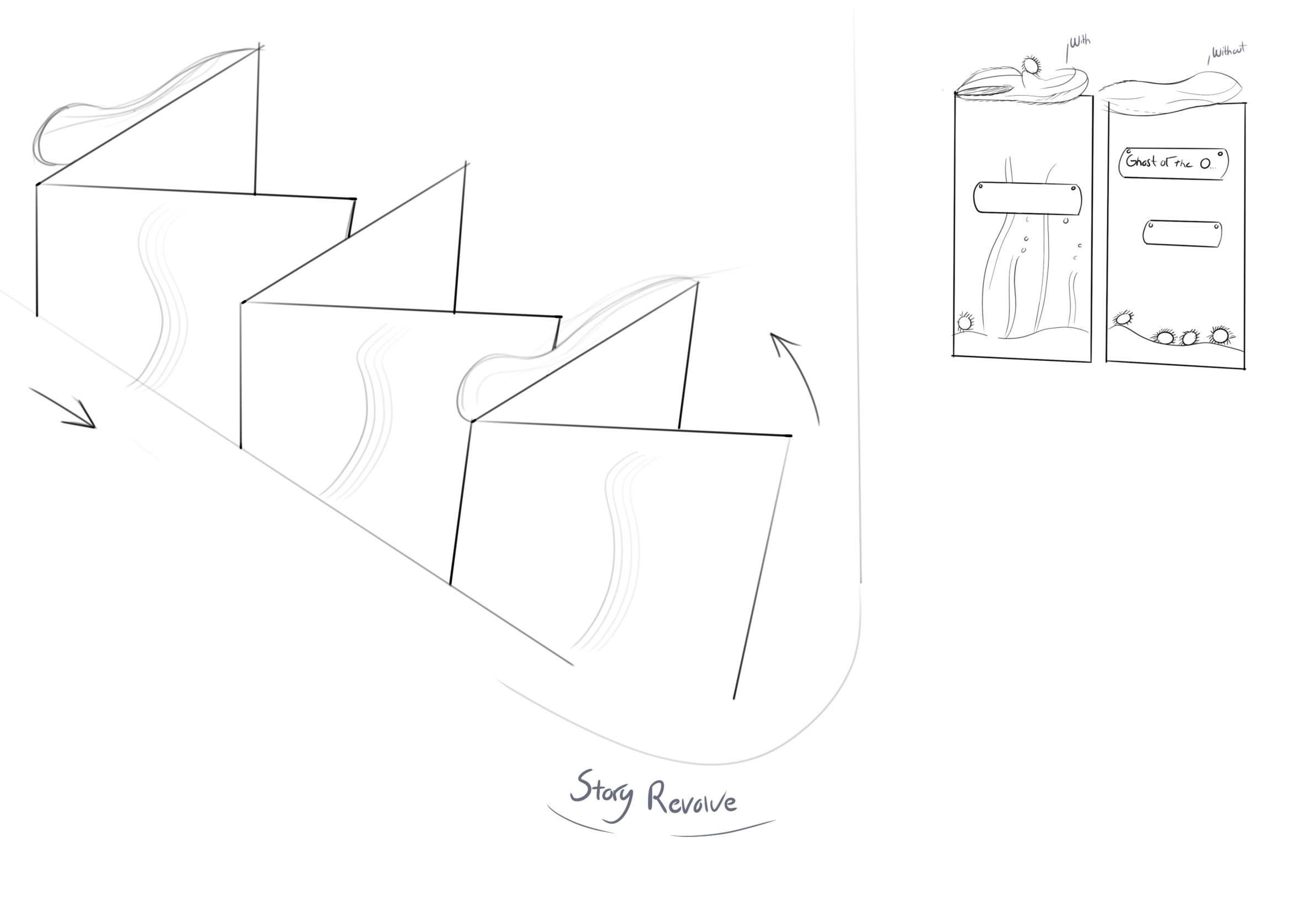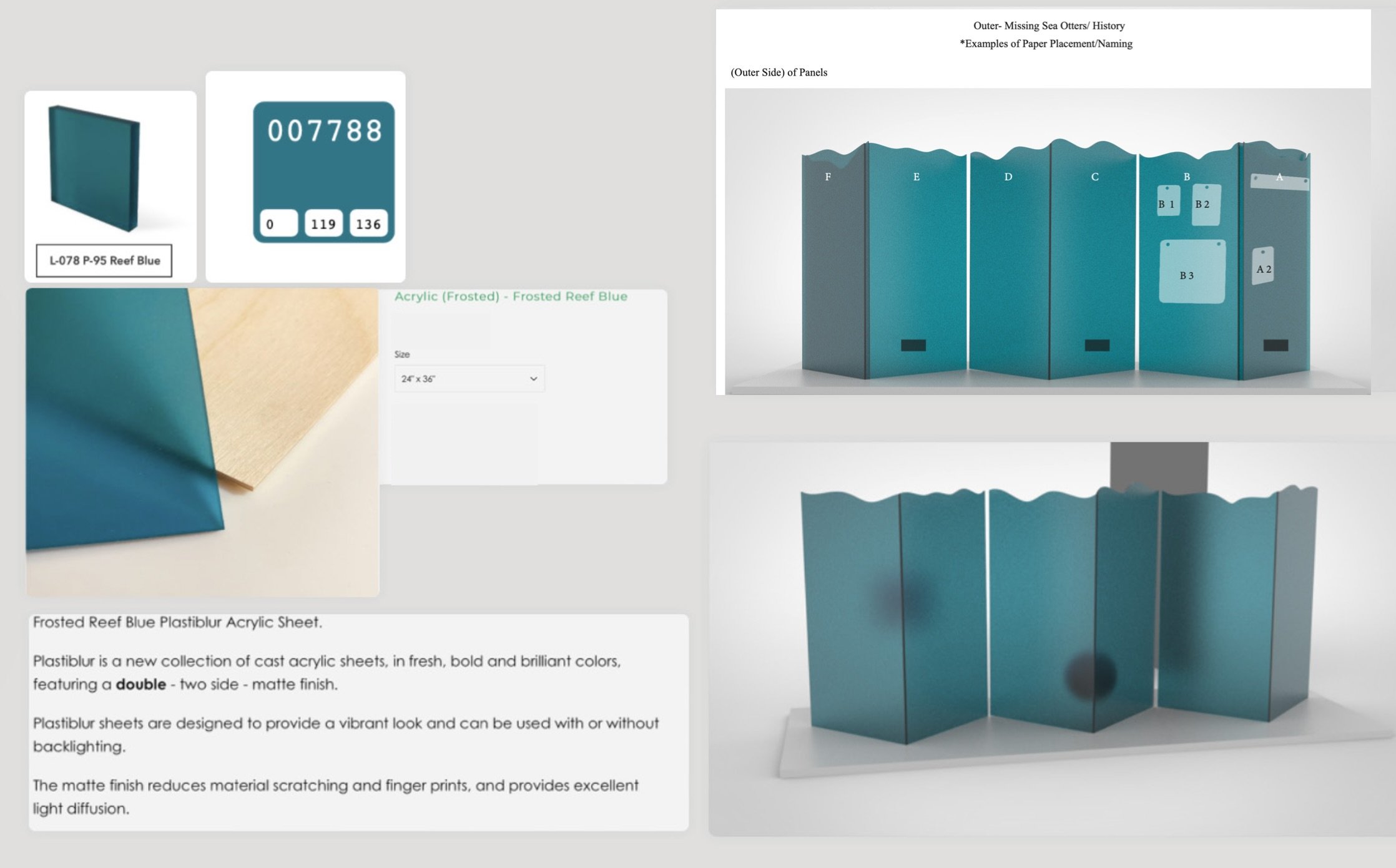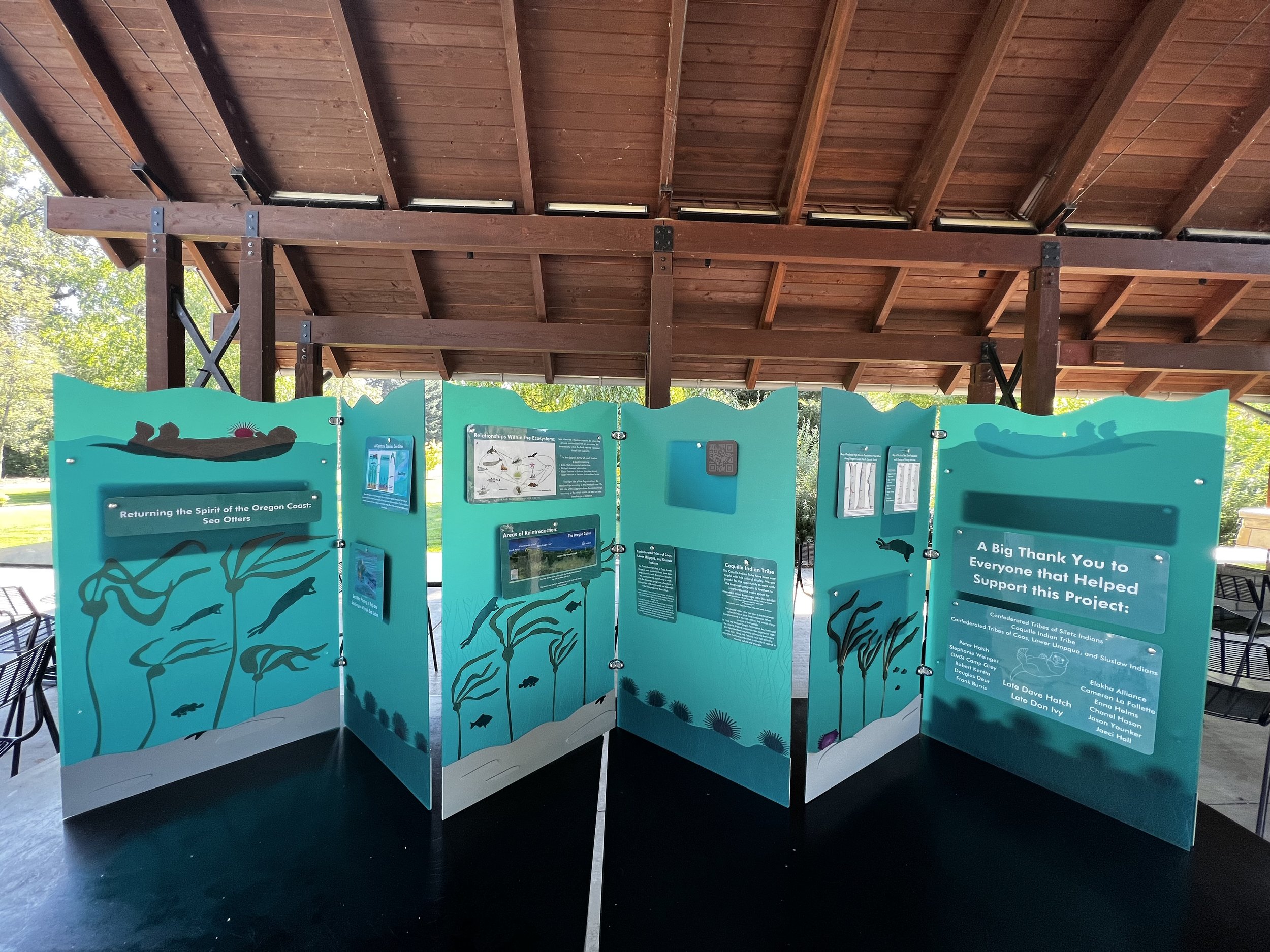ELAKHA ALLIANCE DISPLAY
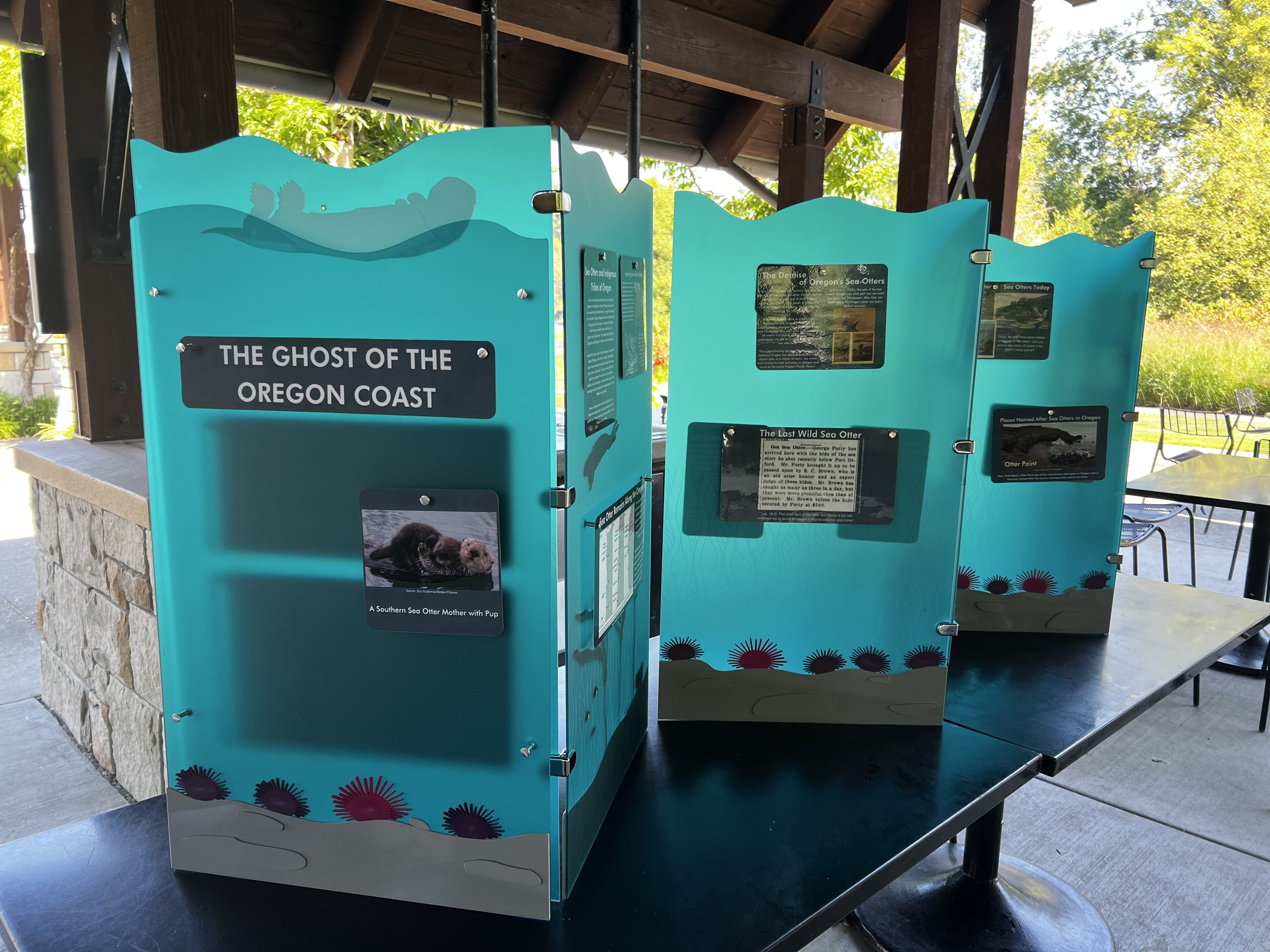
As an intern for the Elakha Alliance, I was assigned to design and build a traveling display to highlight the cultural and ecological significance of sea otters along the Oregon coast.
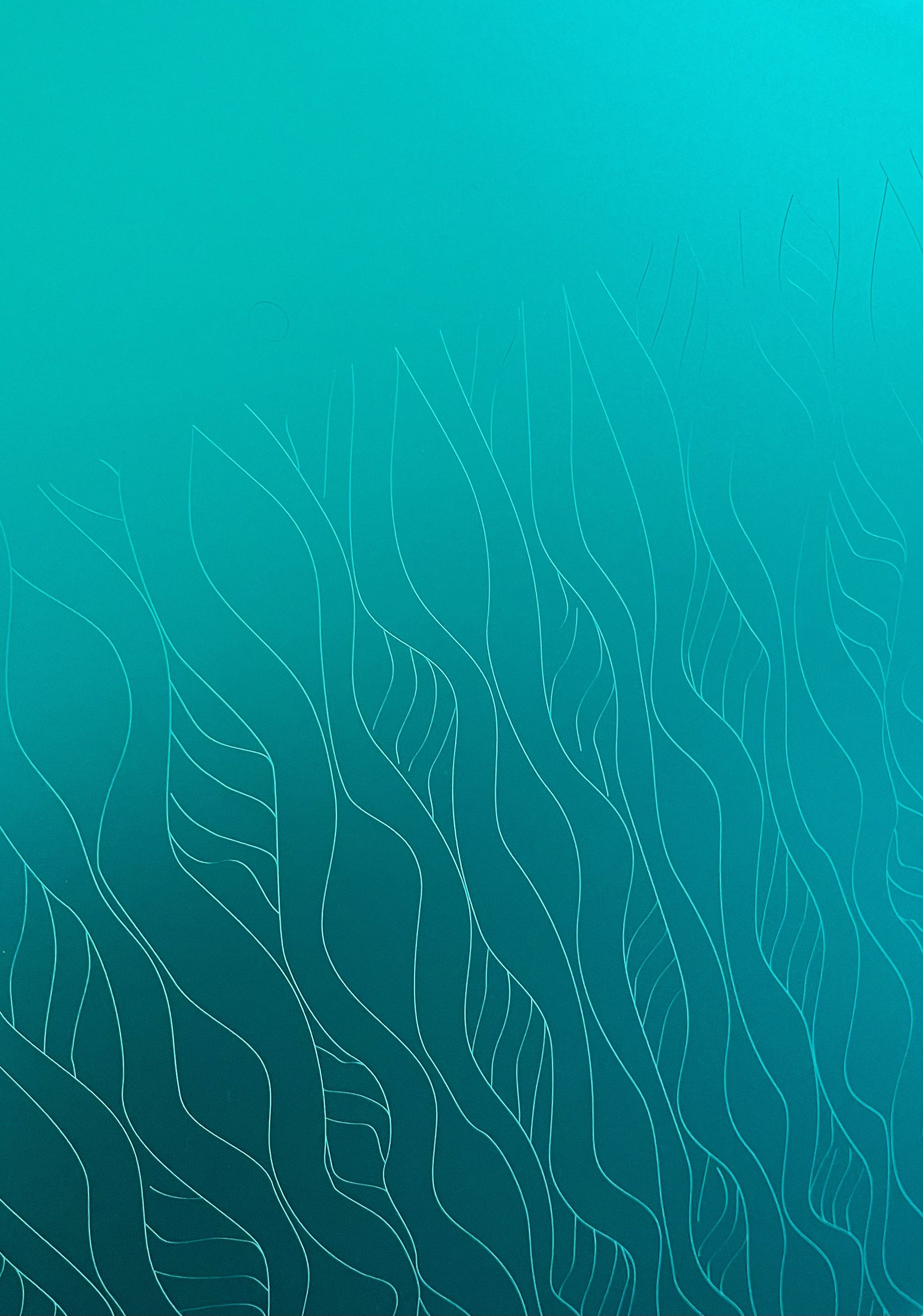
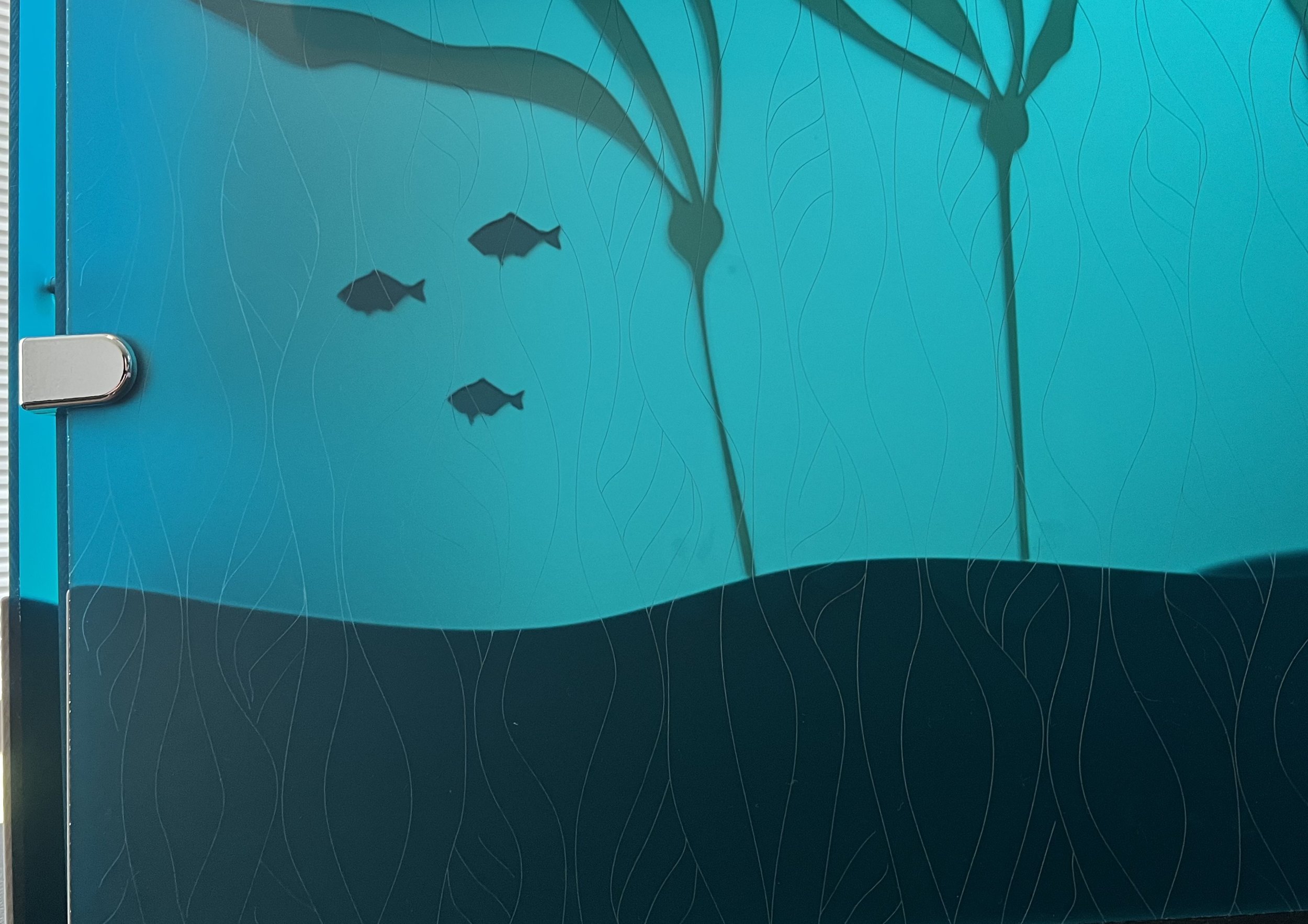
THE ELAKHA ALLIANCE
A non-profit organization that dedicates their time and resources to the conservation of sea otters on the Oregon Coast. Their goal is to reintroduce sea otters to Oregon’s coastal waters, which creates a plentiful marine ecosystem.
The Elakha Alliance was formed by tribal, nonprofit, and conservation leaders with a shared belief in a powerful vision: an Oregon coast 50 years from now where our children and grandchildren co-exist along with a thriving sea otter population and a robust and resilient marine ecosystem.
PROJECT BRIEF
As a Design Intern, I was assigned create this display to show the cultural significance of sea otters on the Oregon coast along with another intern who was responsible for the display text and marketing material.
The display had opportunities to incorporate Indigenous stories of sea otters from Oregon tribes, historical photographs, and maps of where sea otters were present.
HISTORY FOR DESIGN CONTEXT
Sea-Otters were once plentiful on the Oregon coast, where the keystone species had a strong relationship with the Coastal Indigenous Tribes. As a result of the fur trade, the Sea Otter became locally extinct in the early 1900’s.
With Sea-Otters being gone for over a century, the ecosystem has faced negative changes in marine life. One primary problem is the formation of Sea-Urchin Barons, where urchins pile up on nearby rocks to eat kelp. Kelp provides a home to attract and retain eggs, larvae, and juveniles of many species of fish and shellfish, including those of commercial importance.
INITIAL SKETCHES
A concept of dividing display into two sides: A ghost of a sea otter and a real sea otter swimming.
OBJECTIVES
A lightweight display that can showcase Elakha Alliance’s mission to the general public.
Customizable information system for new updates and studies.
Make display that shows the past and present of Oregon’s coast.
Multiple viewpoints and angles for users to navigate.
MATERIAL STUDY & RENDERINGS
I chose this frosted reef-blue acrylic for the display to give the viewer the effect of looking into coastal waters, which also diffuses as users can view the designs on each side.

Detail views of laser-cut hole for prints and initial sea otter “ghost” for the top of display.

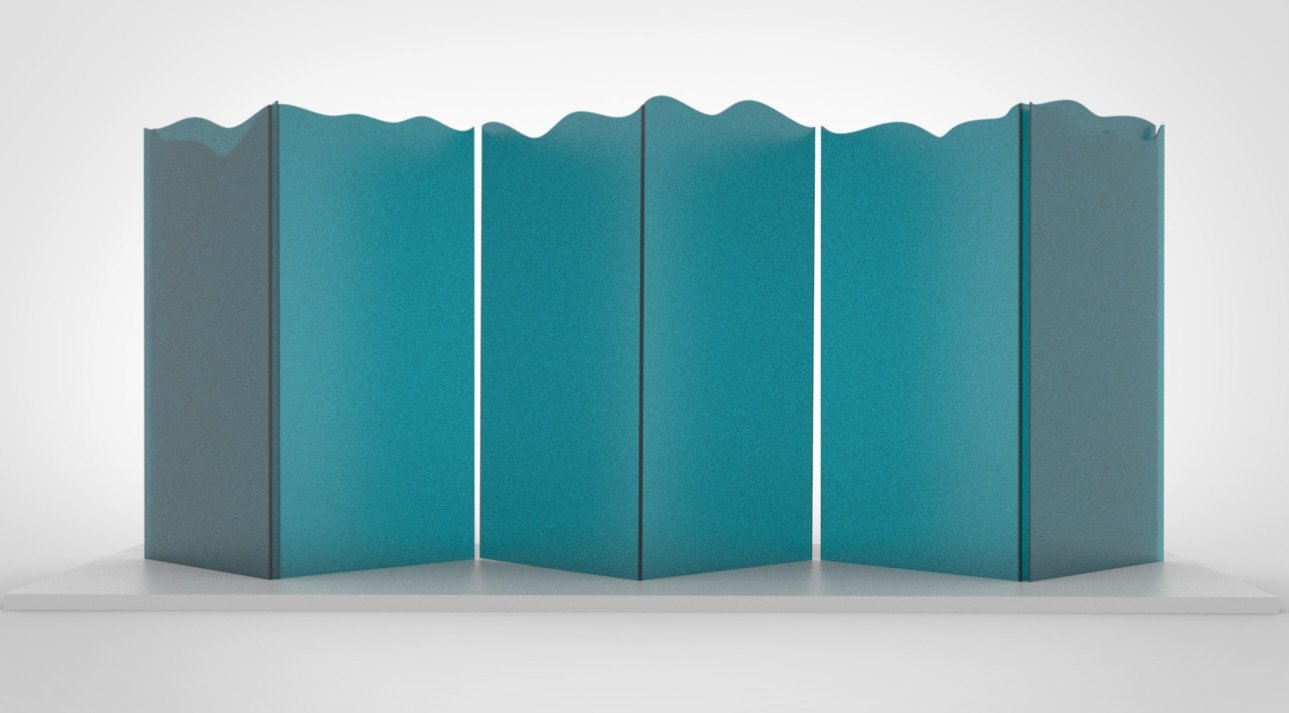
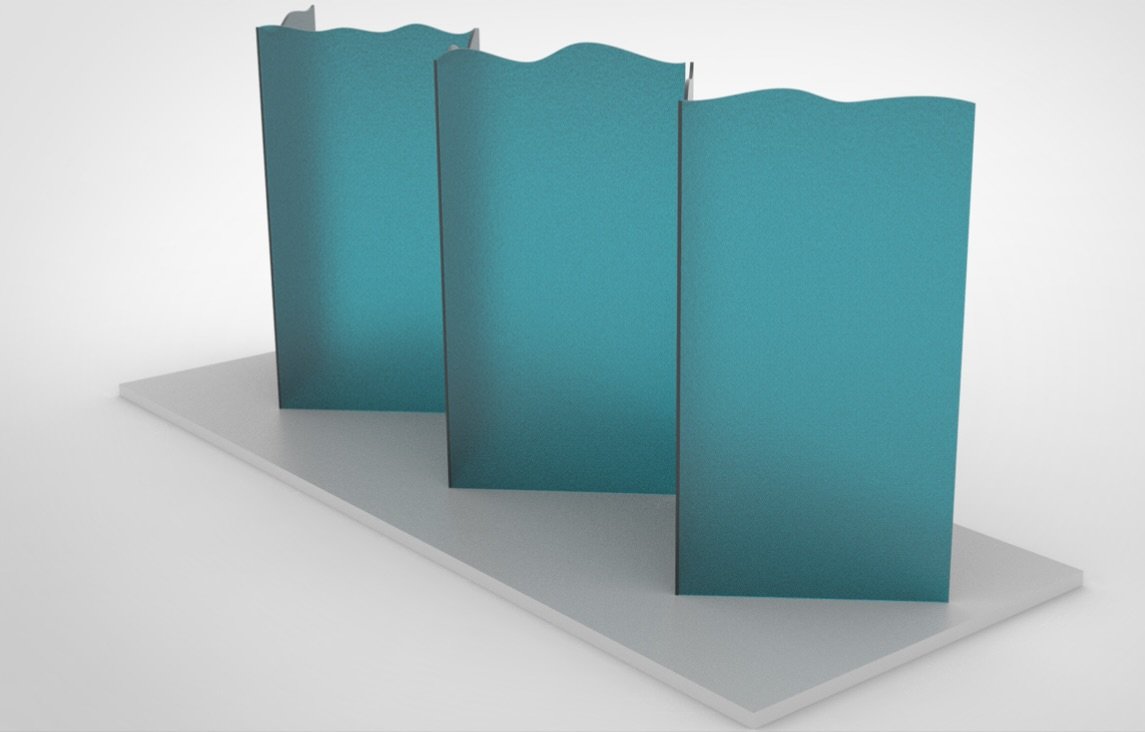
The display has eight panels, where there are 12 total sides for artwork and prints. There are unique laser-cut waves on each panel to follow a continuous pattern.
BILL OF MATERIALS
An outline to track all materials and sources for the final display.
LINEART & KEY
12 Adobe Illustrator artboards that contain specific assets for each side of the display.
The green arrows reference the direction of the storytelling as the user walks around the display.
Two example of Adobe Illustrator files showing artwork on each acrylic panel.
LASER-CUTTING
Production Time: 1 Week

Laser-cutting and etching purple sea urchins from software.
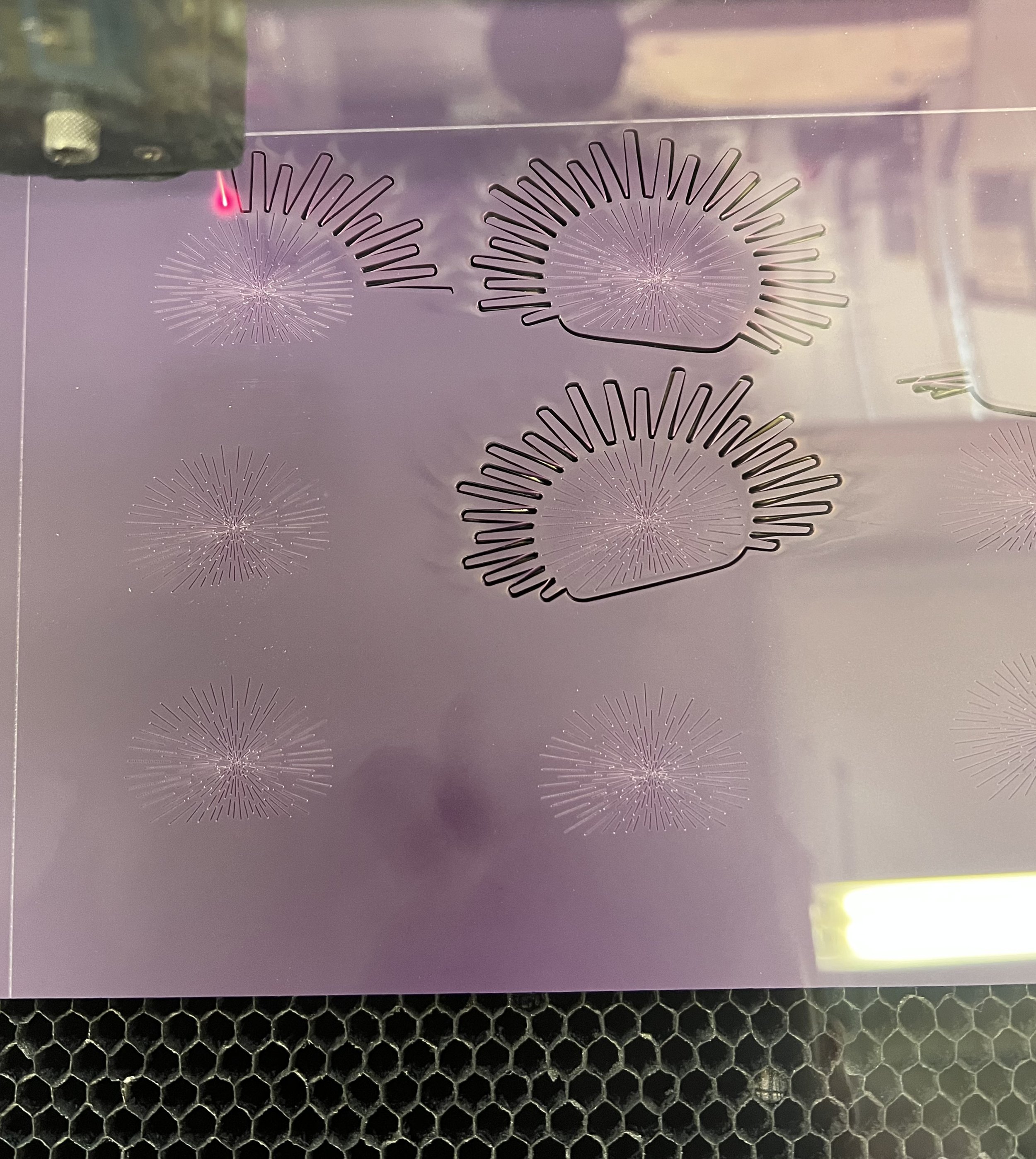
ACRYLIC BENEFITS
Precise cutting straight from AI artwork on computer.
Etching capabilities for more detail.
Range of colors to accompany the acrylic designs.
Quick production time.


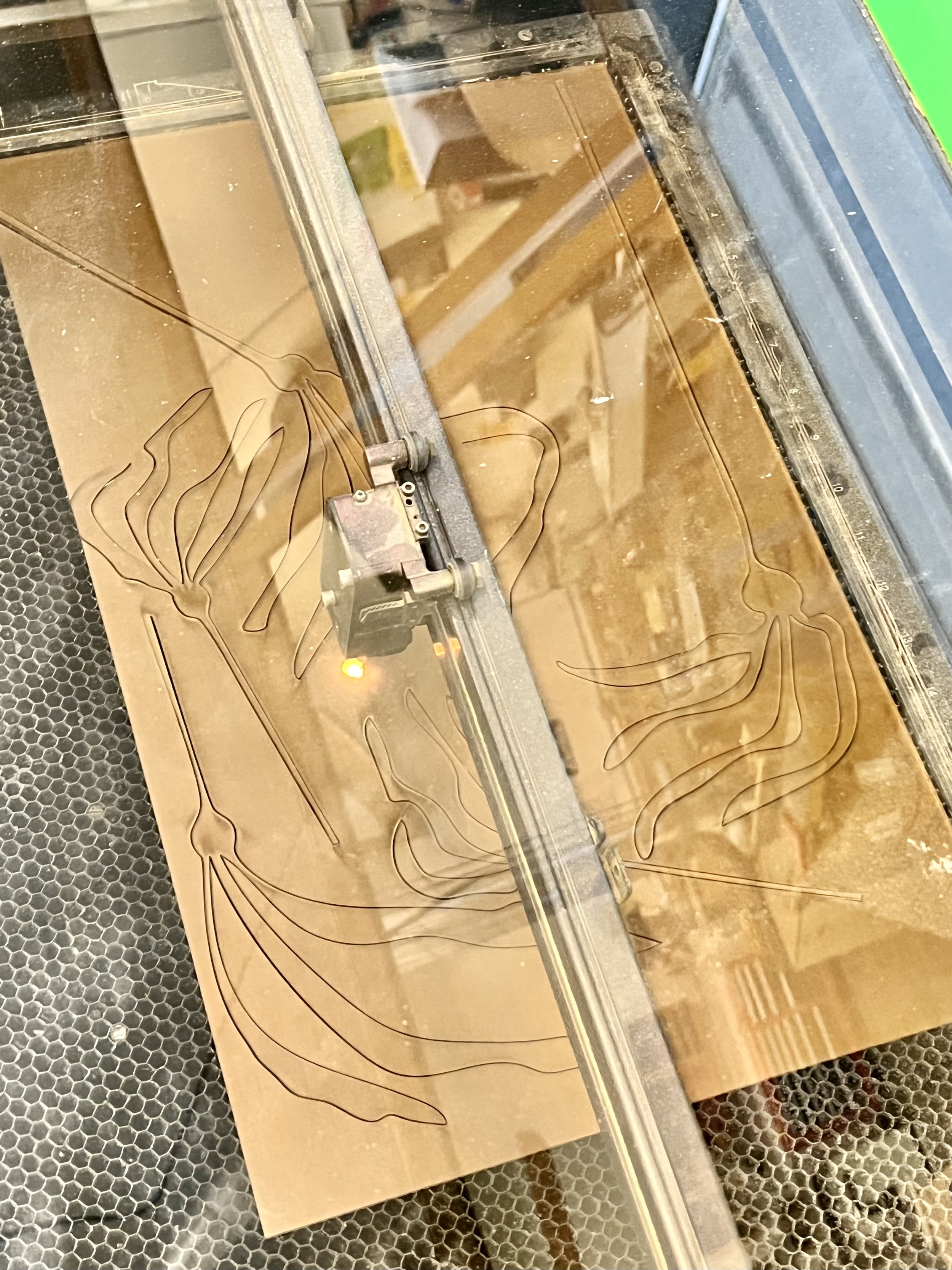
GLUE-UP
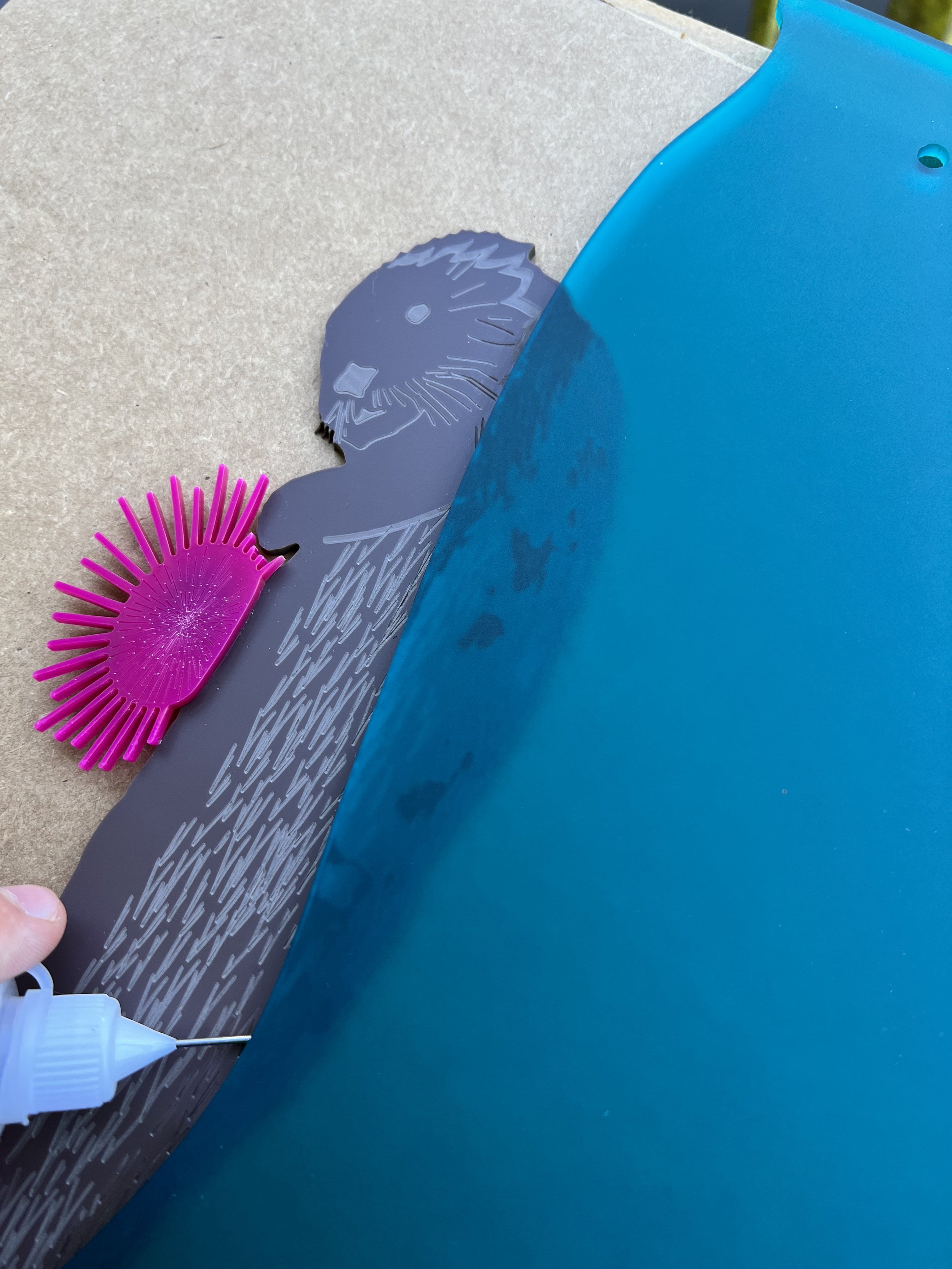

I chose a special glue Weldon 4 for assembly, which instantly bonds acrylic pieces together leaving no residue. Primarily applied to the sea urchin baron panels and kelp panels.
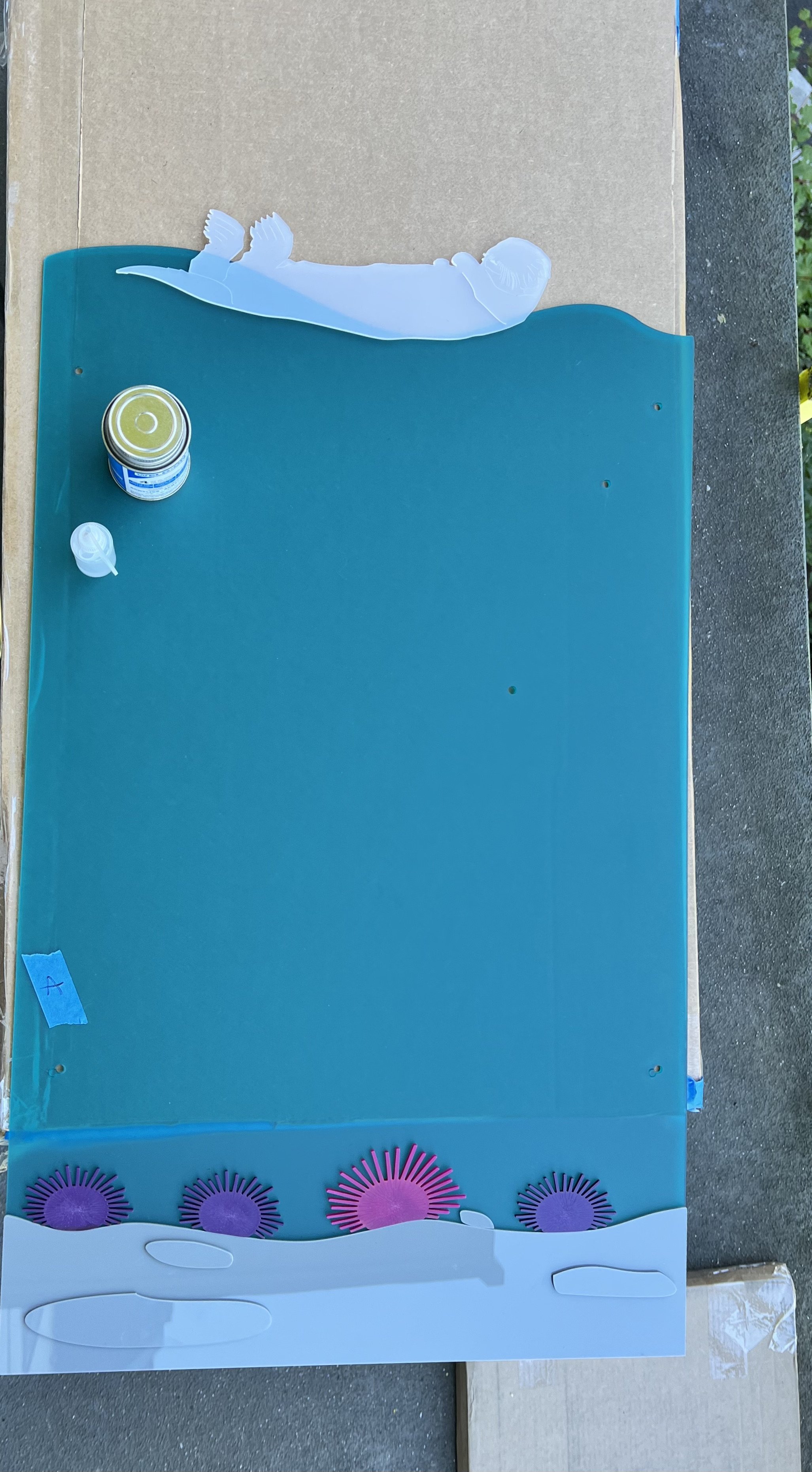
HARDWARE & ASSEMBLY
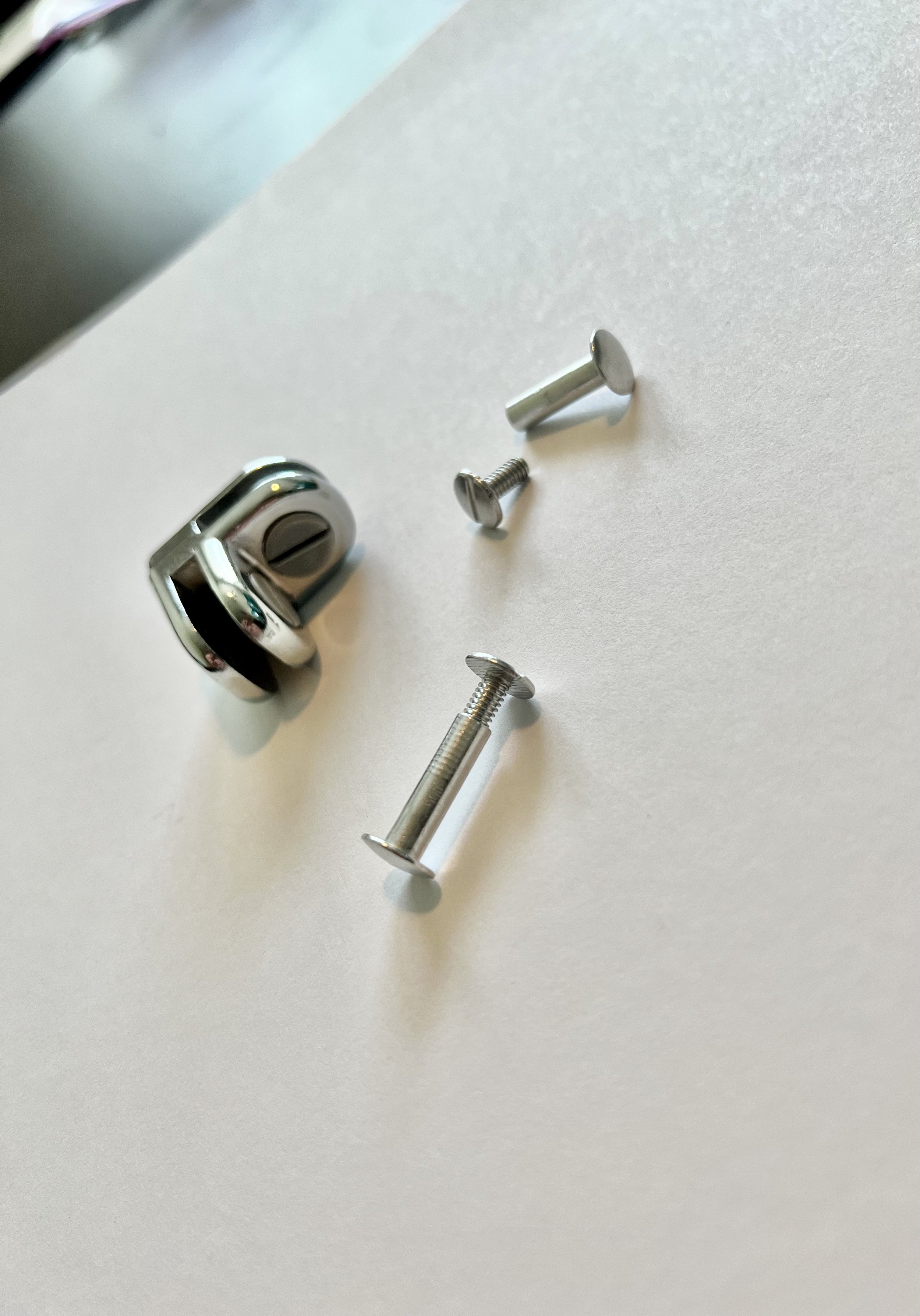
Using a 2-way corner connector for acrylic panels to make the three right angle structures. Also utilizing Chicago screws and posts for applying prints.

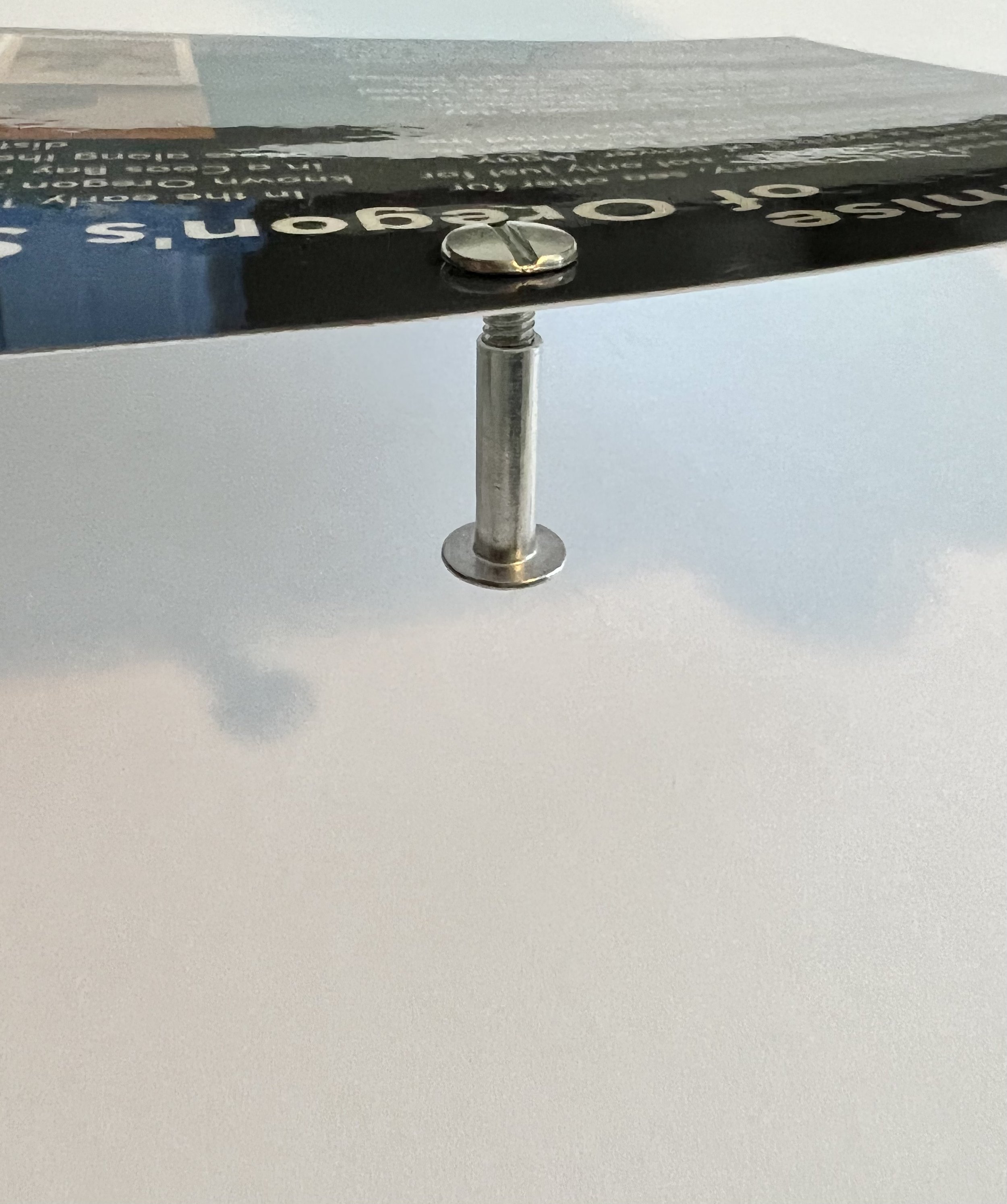
FINAL DISPLAY
Side 1 (No Sea Otters Present)
Side 1: This side of the display shows what our present Oregon coastal waters look like without sea otters, physically showing sea urchin barons on alternating panels.
Side 2 (Sea Otters Reintroduced)
Side 2: Which visually represents the end goal of the Elakha Alliance, a plentiful marine ecosystems where sea otters are reintroduced. Sea otters eating sea urchins, growing kelp forests, welcoming back species of fish.
DETAILS

I took the kelp artwork seen throughout the organization's website, then applied to the acrylic sheets 6/8 using Adobe Illustrator.
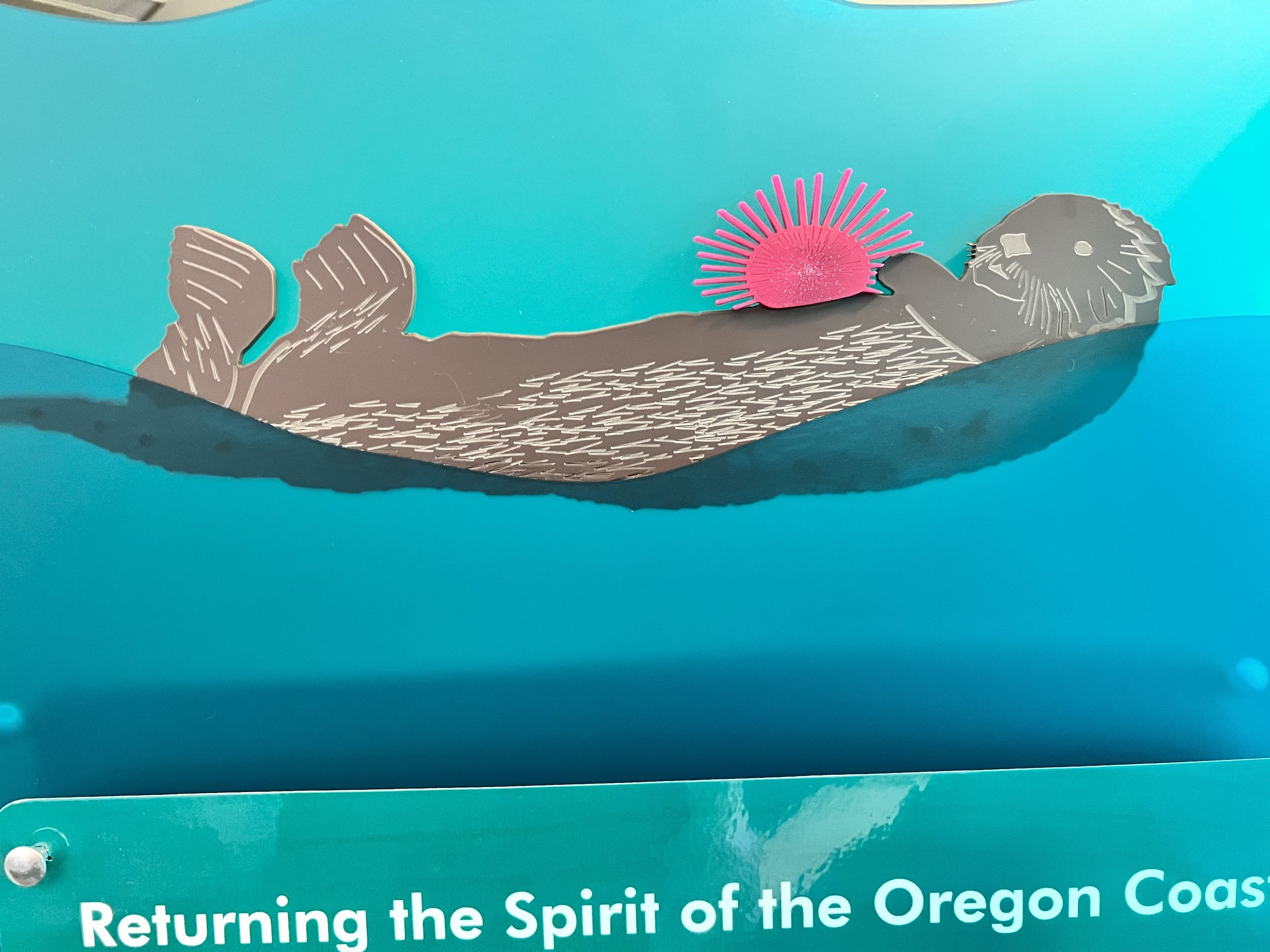
Laser-cut and etched sea otter holding a sea urchin, which is their favorite source of food
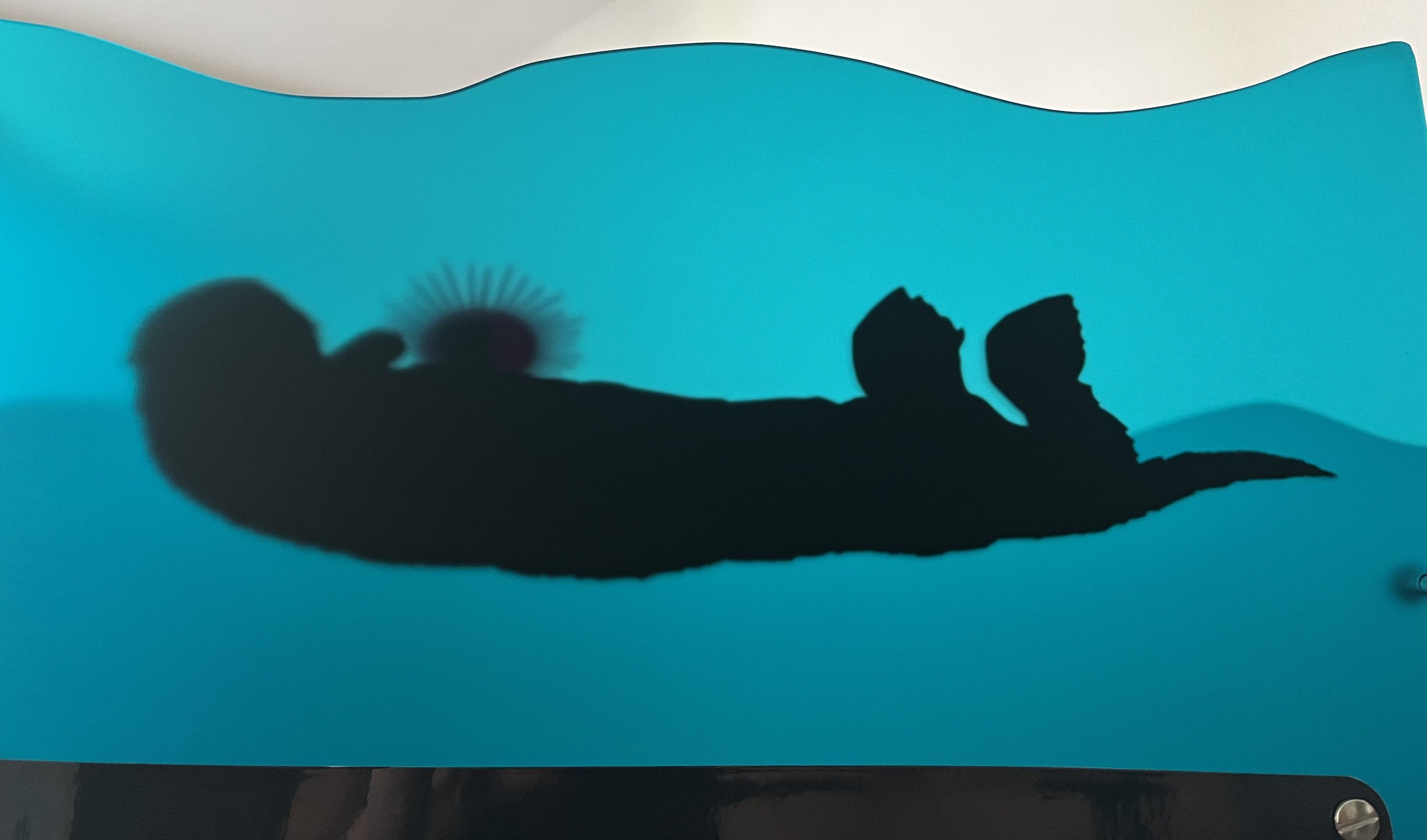


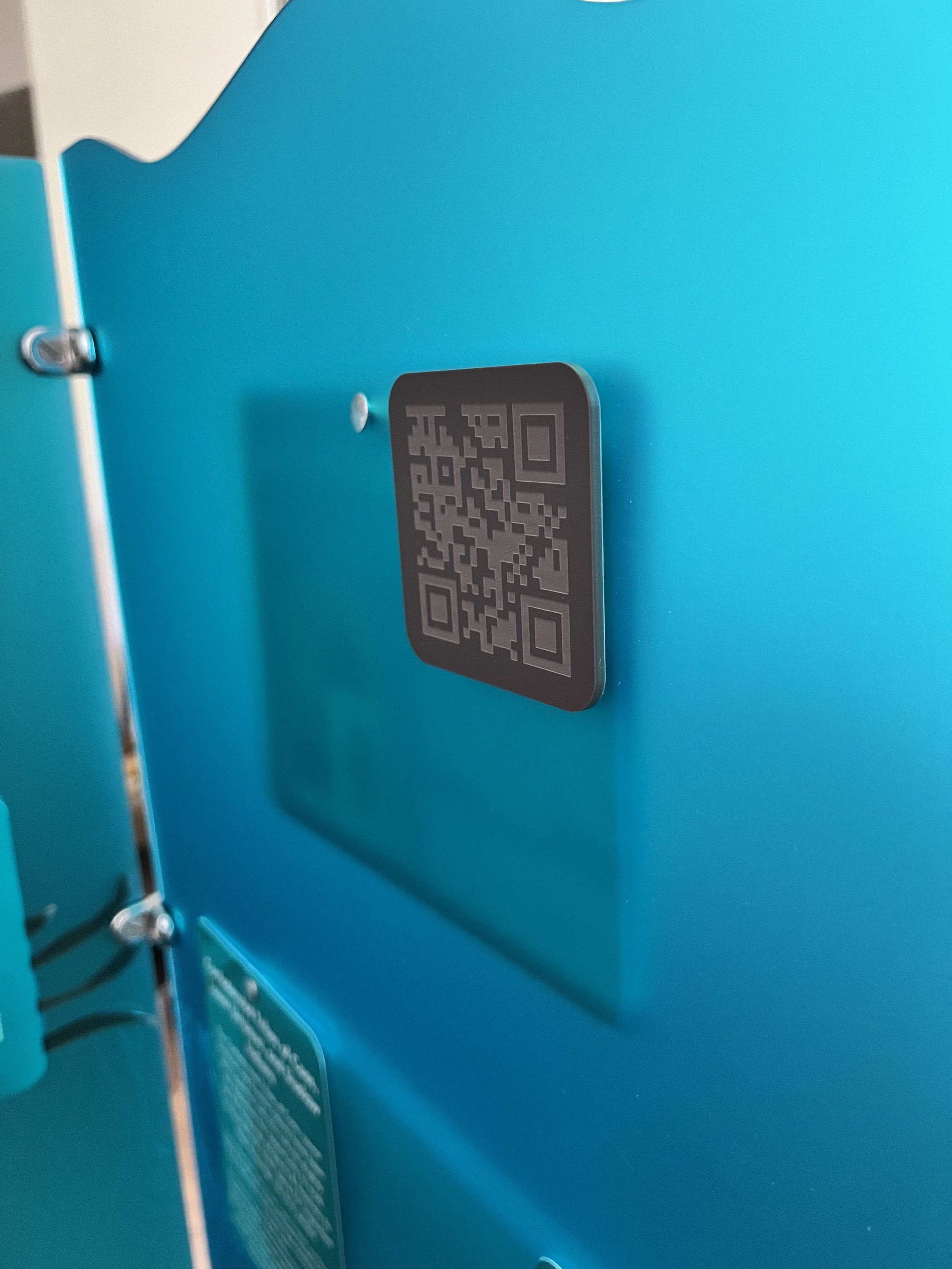
Laser-etched QR code for users to scan and take them to the cultural significance page on the Organization's website

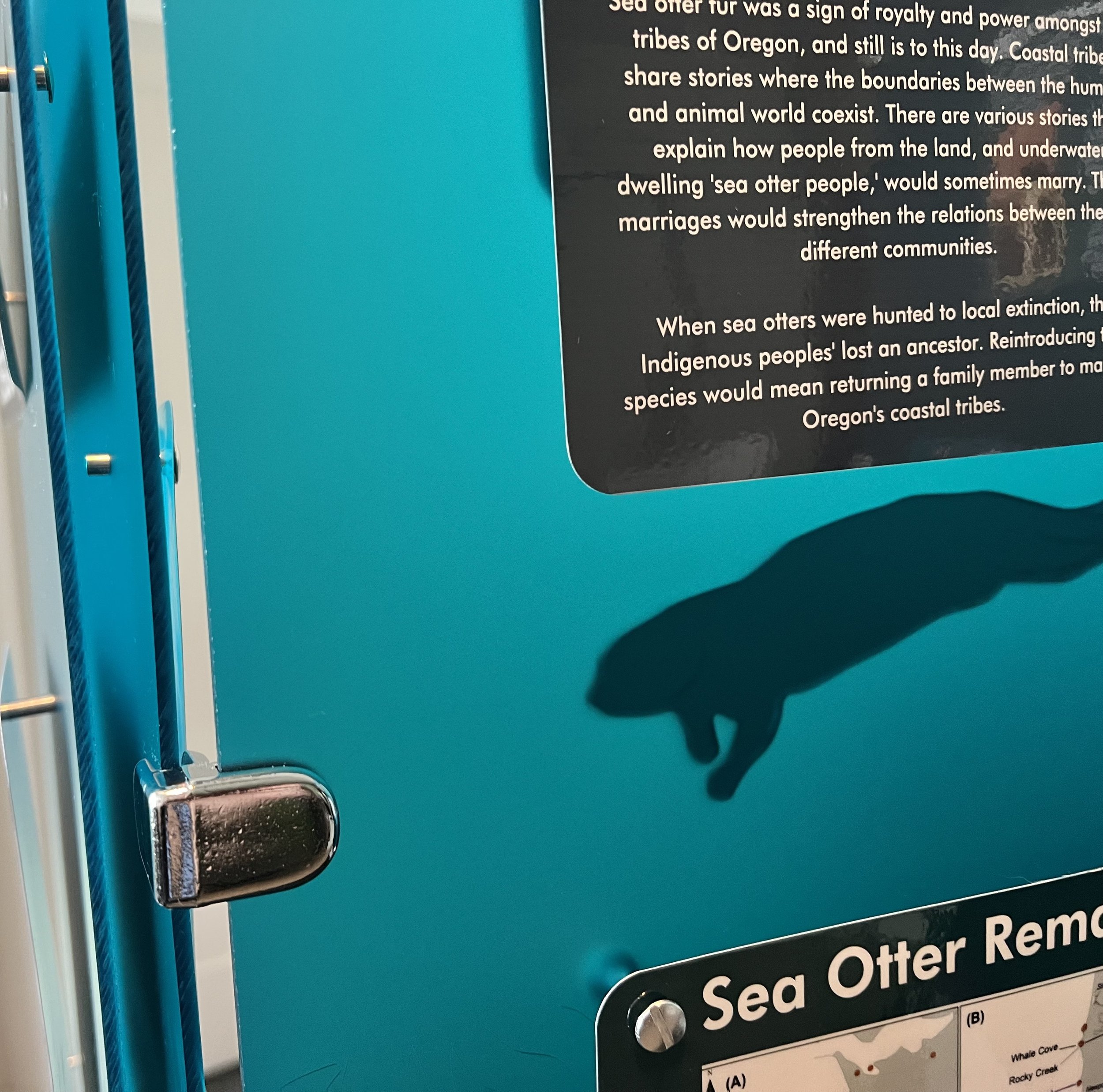
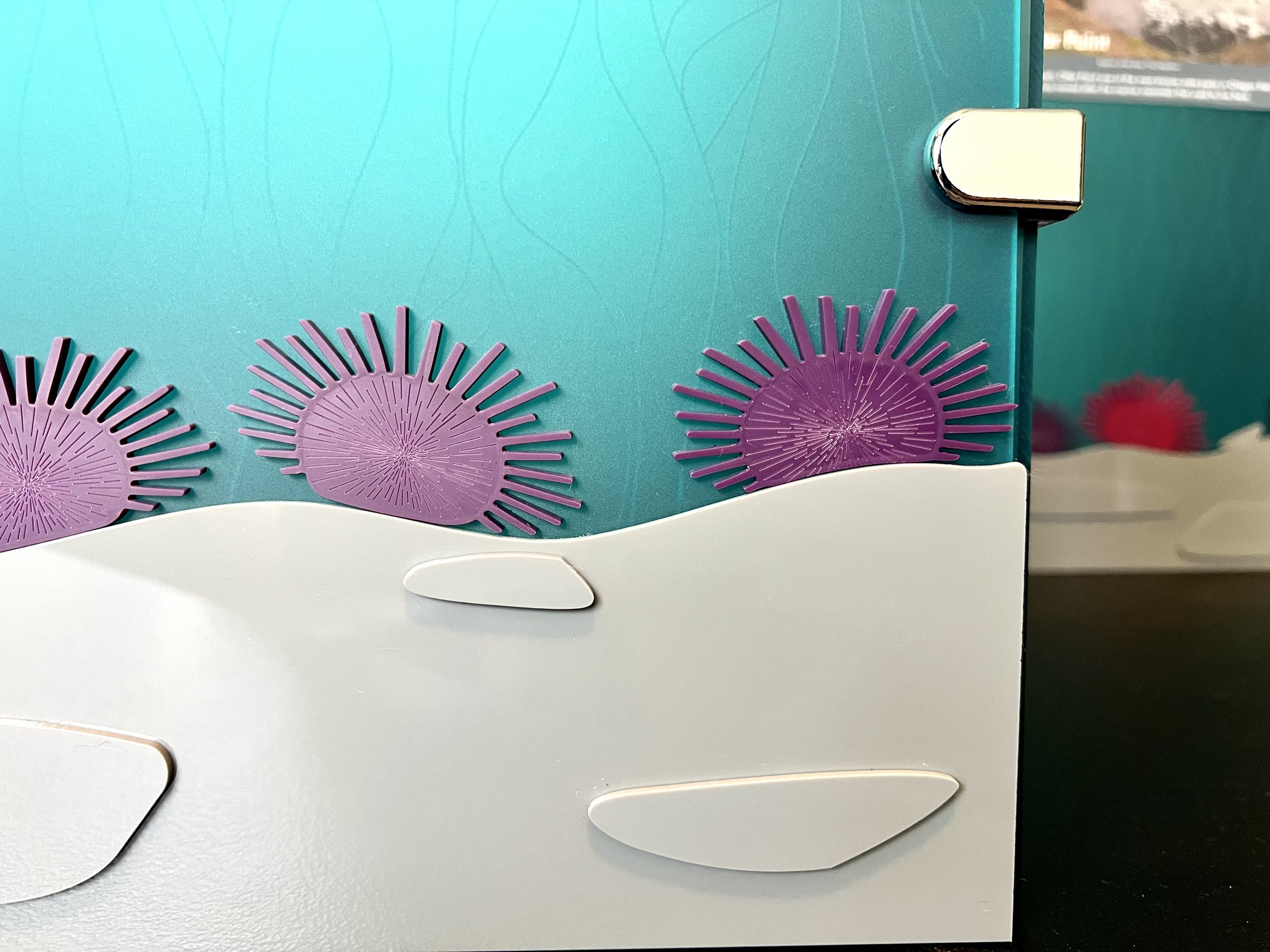
Precise detailing on sea urchins, not one is the same as the other. These had to be designed specifically to sit on top of the organic curvature of the ocean floor.






